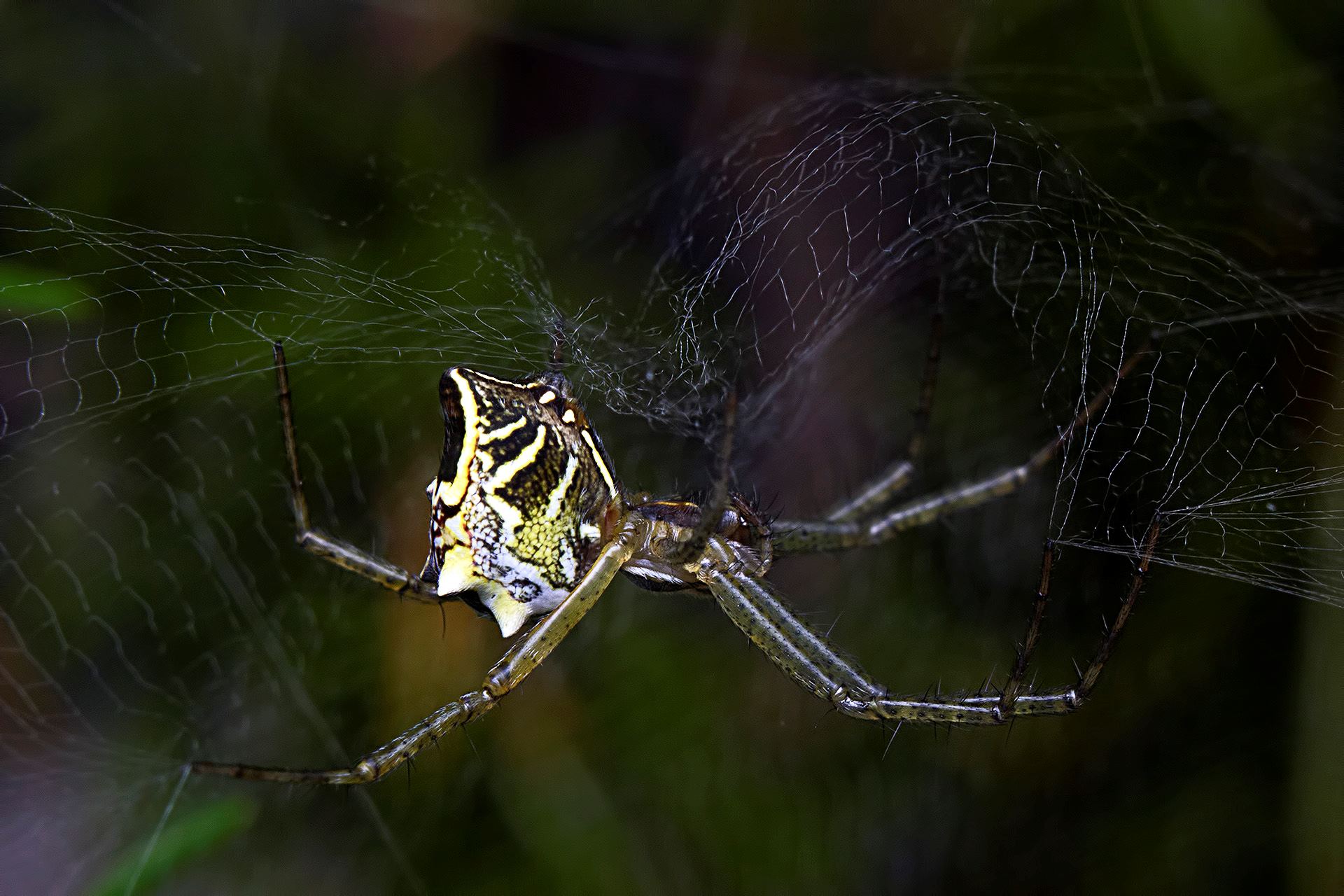
Tent spiders are fascinating creatures that belong to the family Araneidae. These spiders, also known as orb-weavers, are renowned for their remarkable ability to create intricate and beautiful webs resembling mini tents. While tent spiders may not be as well-known as other spider species, they possess a unique set of characteristics that make them truly remarkable.
In this article, we will explore 11 surprising facts about tent spiders that will leave you in awe of their remarkable adaptations and behaviors. From their specialized web-building techniques to their diverse habitats and predatory strategies, these facts will shed light on the hidden world of these intriguing arachnids. So, if you’re ready to delve into the fascinating world of tent spiders, let’s get started!
Key Takeaways:
- Tent Spiders are skilled hunters with excellent camouflage abilities, helping them catch prey and stay hidden from predators in their tent-like webs.
- Female Tent Spiders provide parental care and some species exhibit social behavior, working together to survive and thrive in their natural habitats.
The Tent Spider derives its name from its unique web-building behavior.
The Tent Spider is known for its remarkable ability to construct tent-like structures with its silk. These structures serve as a shelter and provide protection from predators.
Tent Spiders belong to the family Linyphiidae.
The Tent Spider is a member of the family Linyphiidae, which comprises thousands of spider species. They are commonly found in temperate regions all around the world.
Female Tent Spiders are larger than males.
Female Tent Spiders typically grow larger than their male counterparts. This size difference is often seen in many spider species and is attributed to the female’s role in reproduction.
Tent Spiders have excellent camouflage abilities.
Tent Spiders have evolved to possess remarkable camouflage abilities. Their body coloration and patterns blend seamlessly with their natural surroundings, making them practically invisible to predators and unsuspecting prey.
Tent Spiders rely on vibrations to detect prey.
These spiders have specialized sensory organs on their legs that allow them to detect vibrations in their web. These vibrations serve as vital cues to alert the spider to the presence of potential prey.
Tent Spiders exhibit parental care.
Unlike many other spider species, female Tent Spiders provide parental care by guarding their eggs and spiderlings. They spin a silken nursery within the tent structure to protect and nurture their young.
Some Tent Spiders are known to exhibit social behavior.
In certain species of Tent Spiders, individuals are known to live in close proximity to each other and share or build interconnected webs. This cooperative behavior enhances their chances of survival and successful prey capture.
Tent Spiders are skilled hunters.
With their intricate webs and stealthy nature, Tent Spiders are highly efficient hunters. They capture a wide range of small insects and other arthropods, sustaining themselves with a diverse diet.
Tent Spiders can rapidly rebuild their webs.
If their webs get damaged or destroyed, Tent Spiders can quickly rebuild them using their silk-spinning abilities. This ensures that they can resume hunting and maintain their sheltered space.
Some species of Tent Spiders are bioluminescent.
Remarkably, certain species of Tent Spiders possess the ability to emit bioluminescent light. This adaptation serves various purposes, including attracting prey or potential mates.
Tent Spiders are beneficial to ecosystems.
By controlling the population of small insects and other invertebrates, Tent Spiders play a vital role in maintaining ecological balance within their habitats. They contribute to the overall health and stability of the ecosystem.
Conclusion
Tent spiders, with their unique characteristics and behaviors, continue to fascinate and surprise us. From their incredible web-building abilities to their peculiar mating rituals, these arachnids bring an interesting twist to the world of spiders. Whether you find them intriguing or intimidating, tent spiders are certainly a remarkable part of the animal kingdom.
FAQs
Q: What is a tent spider?
A: Tent spiders, also known as orb-weaving spiders, are a group of arachnids that construct complex and intricate spider webs in the shape of a tent or funnel.
Q: Where can I find tent spiders?
A: Tent spiders can be found in various habitats across the globe, including forests, gardens, and grasslands. They prefer areas with ample vegetation and places where they can suspend their webs.
Q: How do tent spiders build their webs?
A: Tent spiders use their silk-producing organs called spinnerets to create intricate webs. They begin by releasing a strand of silk across a gap and then build the framework of the web using radial lines. The final result is a tent-like structure, which provides protection and serves as a trap for prey.
Q: What do tent spiders eat?
A: Tent spiders are carnivorous and primarily feed on insects. They use their webs to capture a variety of prey, including flies, moths, beetles, and even small spiders.
Q: Are tent spiders venomous?
A: Yes, most tent spiders possess venom to immobilize their prey. However, the venom of tent spiders is generally not harmful to humans, causing only mild irritation or swelling if a person is bitten.
Q: How do tent spiders mate?
A: Tent spiders have unique courtship rituals, which vary depending on the species. Males often approach females cautiously and use different methods to communicate their intentions. Once mating occurs, females may lay eggs that hatch into spiderlings.
Q: Are tent spiders beneficial to the ecosystem?
A: Yes, tent spiders play a vital role in controlling insect populations. By capturing and consuming various insects, they help regulate the balance of the ecosystem and contribute to the overall biodiversity.
Q: Do tent spiders have natural predators?
A: Tent spiders have several natural predators, including birds, lizards, frogs, and larger spiders. However, the primary threats to tent spiders are human activities such as habitat destruction and pesticide use.
Q: Can tent spiders be kept as pets?
A: While some people may keep tent spiders as pets, they are not commonly domesticated animals. It’s important to note that spiders generally require specialized care and may not be suitable for everyone.
Q: How long do tent spiders live?
A: The lifespan of tent spiders can vary depending on the species and environmental conditions. In general, adult tent spiders can live anywhere from a few months to several years.
Was this page helpful?
Our commitment to delivering trustworthy and engaging content is at the heart of what we do. Each fact on our site is contributed by real users like you, bringing a wealth of diverse insights and information. To ensure the highest standards of accuracy and reliability, our dedicated editors meticulously review each submission. This process guarantees that the facts we share are not only fascinating but also credible. Trust in our commitment to quality and authenticity as you explore and learn with us.


